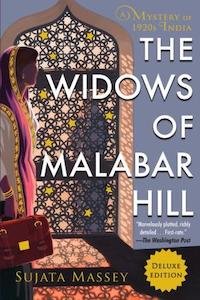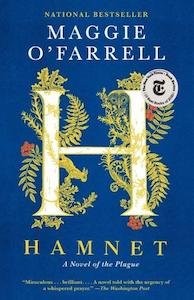(But not necessarily before your first draft!)
Understanding how plots work is the keystone to writing an excellent plot outline, just as it’s essential to writing a good manuscript.
In this blog, I’ll explain how to write a plot outline, when to use a plot outline, and my Big Picture Philosophy of storytelling that’s based on beliefs about telling stories held by E.M. Forster, Aristotle, and Shakespeare.
Most writers fall into two categories: “writers who love to plot” and “writers who love to create characters.” Generally speaking, plot writers tend to visualize events, and they love to write outlines and plan what will happen when. Character writers like to dive in with only a loose idea and get to know the people in their story as they write the first draft. Character writers often tell me that they hate outlines or that outlines take the fun out of writing.
I get that.
But all writers who are crafting a novel should write an outline.
You do not, however, need to write that outline before you write your first draft.
Wait, what?
Writers are often confused by this, so let me back up a bit.
Plot writers versus character writers
Both approaches have advantages and disadvantages. Plot writers create stories where lots of exciting things happen but run the risk of creating characters that feel underdeveloped. Character writers create complex relationships and backstories but sometimes craft stories that feel stagnant. (Scene after scene of two people talking, anyone?)
The most important piece of advice I can give any writer is this: Write to your strengths. Revise to your weaknesses.
You don’t need to start with an outline. But an outline is an essential tool for writers, either when beginning writing or as part of the revision process. (Or both.)
If you love to work with plots, then an outline is a great way to brainstorm events and kickstart your creative process.
If you love to work with characters, then an outline is the best way to revise your first discovery draft.
Outlining a novel doesn't make writing go more quickly
The reason to write an outline is not that it will make writing easier or faster, at least, not exactly. Because the outline itself is a lot of work, and writing an outline--if you do it properly--will slow you down at first. The reason to write an outline is that it will force you to boil down your scenes to their essence. And when you do this, you can more easily see what can be eliminated or combined. You can see where the most emotional moments are. You can more easily assess the overall pacing.
Decisions, actions, and character impact each event
You cannot separate plots from characters or characters from plots. Every story is a story about someone who faces events and makes decisions. By making decisions and taking action, the character impacts events. But the events themselves impact and change the character. The person at the start of the story is a different person by the end of the story.
That is the purpose of the story.
There are some people who say that “everything happens for a reason.” Of course, in life this isn’t true. Random events—both good and bad—happen all the time. But in a novel, it is true. Everything happens for a reason.
What reason? To make the character into the person they will be at the end of the story.
An outline should capture more than just events. If you are writing a novel, the outline also needs to capture why things happen, and the explanation is always found in the character, their relationships, and their emotions.
What Goes Into An Outline
A novel outline is not just a list of “this happened and then this happened”. Remember that a novel must supply a why, which means that an outline should capture character motivation.
Step One: Capture the Protagonist
Step Two: Determine the Ending
Step Three: Build Out the Cast
Step Four: Investigate the Setting
Step Five: Establish the Tentpole Moments for Main Plot
Step Six: Establish the Tentpole Moments of Subplot
Step Seven: Understand What You Need to Capture in Each Scene
Step Eight: Begin the Scene-By-Scene Outline
Step One: Capture the Protagonist
Your main character will determine your plot.
The main character will drive the main plot by taking action. Your character must want something, and usually what they want is to solve a problem. They will take action to solve the problem, but the action will have unexpected consequences. They will then take further action, resulting in more unexpected consequences.
One of the most common mistakes writers make is in creating dynamic characters ((insert link)) who experience events, but don’t take action to get what they want. Readers are not invested in characters who simply stand back. Even timid characters can take action—they can actively avoid a situation or flee a confrontation.
In an outline, the four essential points you need to capture about your protagonist is their:
Feature: their dominant positive quality
Flaw: their dominant negative quality
Want: the problem they wish to solve
Guiding Belief: the way they think about the world
Step Two: Determine the Ending
Photo by Gabriella Clare Marino on Unsplash
You don’t need to know the exact ending of your novel before you write it, but you’ll need to have a sense of whether it will be a happy ending or a sad one from your character’s point of view. Stories that have happy endings usually start with characters who are flawed in some way and, little by little, grow and improve as people. Stories with sad endings are the opposite—the character starts off only slightly flawed, but gets worse and worse over time.
Knowing whether your character is improving as a person or becoming more flawed will make it easier to brainstorm plot events.
Step Three: Build Out The Cast
Interactions between characters create most plot points.
Your protagonist is not the only character who wants something. Your secondary characters want something, too. (Even your villain wants something—usually the same thing or the opposite of what your protagonist wants.) Again, the plot will be driven by the character’s want.
Your cast will help you determine your subplots. Create the rest of the cast in the same way that you created your protagonist: by determining their feature, flaw, want, and guiding belief. The difference between a main plot and a subplot is that subplots are shorter and less intense.
Step Four: Investigate Your Setting
Your setting offers opportunities for plot points.
Many writers consider settings in order to build a mood or evoke emotions in a reader. They are also plot opportunities. When you think about the location where the action takes place, you can consider where cast members might interact and places that might escalate conflict. Think about who lives with whom, how close those locations are, where the common spaces are located, and what in the setting might cause conflict or struggle. Is there a mountain to climb? A river to cross? A diner where everyone comes for waffles? A tavern that attracts marauders and thieves? Each location has something to offer.
Step Five: Establish the Tentpole Moments For The Main Plotline
Photo by Tommy Lisbin on Unsplash
Tentpoles hold up your story
There are five major “tentpole” moments that support your story. Some people have given these moments names and divided them into Three-Act Structure or Five-Act Structure or The Hero’s Journey. But, fundamentally, they are:
The set-up: Once upon a time
The problem: And then one day
The first major failure: When all of a sudden
It seems as if all is lost: When just at the last minute
The details are wrapped up: They all lived happily ever after
There are, of course, a large number of scenes between these major moments. In these scenes, things are either getting better or worse for the main character. Some ways that things could get better for your character are that they meet a mentor or friend, they find something useful (could be information), they make something useful, they improve their skills, they reach a destination. Some ways that things could get worse for your character are that they become injured, they are threatened by the villain, they attempt something and fail at it, their equipment fails, the clue they found is a dead end, someone steals something important that belongs to them.
Step Six: Establish the Tentpole Moments for Subplots
Smaller tents need fewer poles
Most subplots follow the same structure as a main plot, but are slightly shorter. Their major tentpole moments are often combined and there are fewer scenes between them. For example, we might meet our secondary character and understand their problem in the first few sentences of the introduction. Their first major failure and all is lost moments might be the same. And their happy (or sad) ending usually coincides with the main plot’s outcome.
Determining between three and five major moments for each of your subplots will help you brainstorm and flesh out many of the scenes in your scene by scene outline.
Step Seven: Understand What You Need To Capture In Each Scene
A large part of writing a good scene-by-scene outline lies in understanding what makes a scene. Each scene should capture Six Essential Moments:
time and location of the scene: setting
the character’s opening emotion: what is your character feeling?
the character’s expectation: what do they expect to happen?
how that expectation is upended: what actually happens?
how the character’s emotion changes: how the character feels
the character’s new expectation or plan: or a cliffhanger
Step Eight: Begin The Scene-By-Scene Outline
For outliners with a Discovery Draft:
Photo by Gabrielle Henderson on Unsplash
If you have already written a discovery draft, tackling a scene-by-scene outline is fairly straightforward. Simply re-read your work, breaking each scene into the Six Essential Scene Elements. If an element is missing, consider whether the scene is really working. You might need to combine what happens in this scene with another, more active scene. Or you might want to cut the scene entirely.
For outliners working on a first draft:
Once you have written your Five Tentpole scenes descriptions and subplot tentpole scene descriptions, it’s time to brainstorm how to get from point A to point B. Consider what your character wants, why they want it now (instead of earlier), and who or what is preventing them from getting it.
Every scene is a moment in which things either get better for the character or get worse for the character. What are some things that might happen that might make the character’s situation worse? Brainstorm as many as you can for two minutes. Don’t edit yourself here—feel free to think of ridiculous things, like Character gets hit in the head with a loaf of bread or Character falls in a well.
Remember the setting and the other characters. What exists in the setting that might cause a problem? What could the other characters say or do that would make things worse? Just come up with as many as you can. You should have a list of at least ten events, but it will probably be a lot more.
Next, ask,what are some things that might make the character's situation better? Setting and characters offer opportunities for plot events. Making a friend or meeting a mentor is a great way for things to get better, and it is also a way to kick off a subplot.
Take a look at your two lists and choose at least one event to explore as a scene. Go through the Six Essential Moments for the scene and see where it leads you.
Every scene you write will set up the next scene. The next scene will either continue the plot or defer the plot.
These things get better/things get worse scenes are the fabric that connect your major tentpole moments, setting them up so that they have the right emotional impact.
When done properly, an outline serves as a map of your story, offering a bird’s eye view of each step along the journey. It can help you see where your story is off course and help streamline your storytelling process.
Lisa Papademetriou is a former editor with Scholastic, HarperCollins, and Disney Press, and has taught at Sierra Nevada College’s MFA program in Writing. She is the author of A Tale of Highly Unusual Magic (a South Asia Book Award Highly Commended Title), the New York Times-bestselling novel Middle School: My Brother is a Big, Fat Liar and Homeroom Diaries (both with James Patterson), and the Confectionately Yours series, among others. Her books have appeared on many prestigious lists, including Bank Street Best Books of the Year, the NYPL Books for the Teen Age, and the Texas Lone Star Reading List, and have been translated into multiple languages. Most recently, she is the founder of Bookflow.pub, a tool designed to help writers reach their goals by building skills, organization, and motivation.






























































































